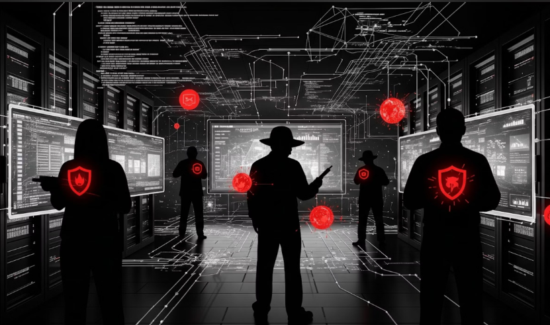How to Better Protect Your Enterprise’s IT Perimeter


Where is your enterprise’s IT perimeter? And what is the best way to secure it?
These used to be fairly easy questions to answer. In the earliest days of cybersecurity, the enterprise’s IT perimeter extended to only as far as the endpoints located on-premises. All it required was the installation of a (now-legacy) antivirus solution on each one individually.
However, in the modern age of endpoint security these questions become far more complicated. Is identity the new perimeter, as many experts claim? What about mobile devices, so prevalent in the age of bring-your-devices-culture? And how does this all relate to the cloud, the new gold standard of enterprise architecture?
Endpoint security is evolving to keep up with the new threats to IT perimeters the world over. But like all of cybersecurity, endpoint security is a two-way street; it requires your involvement as well.
Here’s how you can better protect your enterprise IT perimeter:
Closing Vulnerability Windows
The first step to strengthen your IT perimeter is to reduce its porousness by closing any lingering vulnerability windows.
According to the SANS Institute, one of the premier cybersecurity research firms, legacy antivirus solutions rely on signature-based detections. This comes with the obvious drawback: signatures require time and research to defend against new threats. The longer a threat persists, the more likely it is to slip past your IT perimeter and cause dwell damage.
Every endpoint security expert worth their salt—including the SANS Institute—agrees securing the IT perimeter requires enterprises to switch to a next-generation endpoint security solution. These offer better, faster protection against newer threats and thus better securing the enterprise IT perimeter.
Closing Cloud Vulnerabilities
Perhaps more essential than closing the typical security holes is closing the security holes from the cloud IT perimeter.
Digital transformation poses as many unique challenges to enterprises as it provides incredible productivity and connectivity benefits. One of these unique challenges is the IT perimeter of your enterprise expanding beyond your vision and your endpoint security’s protection.
The cloud IT perimeter means employees, third-parties, and other users can log in on virtually any endpoint from anywhere—with the perimeter stretching to match. Every endpoint, therefore, becomes part of the perimeter and thus requires security visibility and monitoring. Deploying a next-gen endpoint security on your enterprise’s network is necessary to process the big data generated by cloud deployments.
Automate Your IT Perimeter Security
There is an unfortunate truth in endpoint security: the need for human talent and perception will never go away entirely. Even as machine learning fortifies and improves endpoint security, humans will still need to partner with it to ensure optimal threat detection.
However, that doesn’t mean investing in security automation is a poor choice—far from it. Automation is necessary to remediate the threats lingering on the periphery of your IT perimeter. While you may need your human talent to analyze a security alert, you can automate removing said threats faster than human action ever could.
Additionally, automation is necessary for maintaining your IT security team’s sanity. The expanse of the new enterprise IT perimeter requires far more vigilance—stretching your already thin security resources. Automation alleviates the burden and the fatigue that comes with IT perimeter monitoring. Preventing burnout is just as vital as fighting digital threats directly. Without a game security team, you’ll end up in a far more porous network.
Other Resources:
You Need to Hire More Female Cybersecurity Professionals
In Focus: The Desperate Shortage of Women in Cyber Security
Gartner’s 2018 Magic Quadrant for Endpoint Protection Platforms (EPP): What’s Changed?
4 Tips For Endpoint Security Solutions (That Everyone Forgets)
Comparing the Top Endpoint Security Vendors — Solutions Review
Answering the Top 4 Enterprise Endpoint Security Questions
What Can We Expect for the Future of Endpoint Security?




















